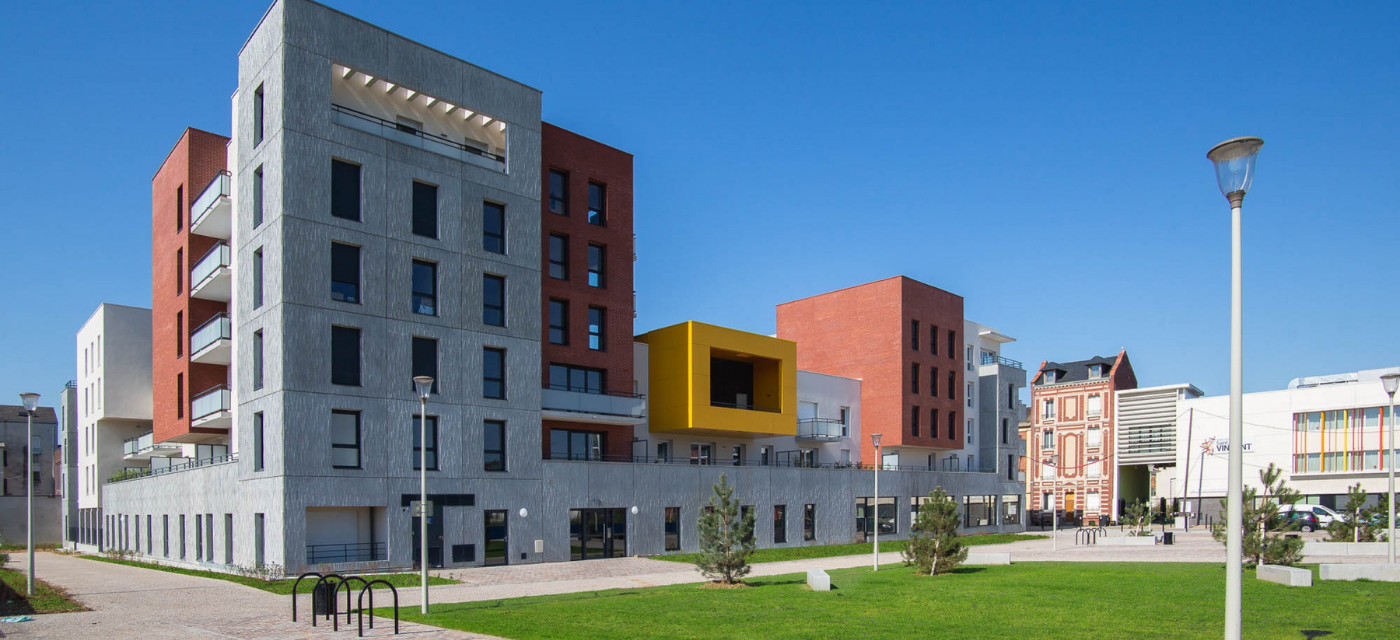CARRERE inaugurates the first residential program delivered from the ZAC Dumont d’Urville (Le Havre), a “KUBIC” residence comprising 74 apartments.
KUBIC, 1st residential operation in ZAC Dumont d’Urville
In the Saint-Nicolas district, in Le Havre (76), CARRERE inaugurates KUBIC. It is a set of three buildings totaling 74 apartments, including 20 social housing. It was designed by the firm Franc Architectures – Agence Jean Amoyal. Thus, KUBIC is the first residential program delivered from the ZAC Dumont d’Urville, created in 2015.
The ZAC is located in the port of Le Havre. It is thus integrated into the Urban Renovation Program (PRU). Program conducted in partnership with ANRU. This device makes it possible to practice selling prices with a VAT reduced to 5.5%. And this with first-time buyers, eligible for “controlled prices”.
An urban ensemble between past and modernity
It is with particular attention that this project has been considered. An insertion in the heart of the block, interlocking in an urban ensemble between buildings of the past and modernity.
In order to make the link, these 3 buildings of 4 to 5 levels, with resolutely geometric shapes, have a harmonious set of materials made of stamped concrete, terracotta plates, smooth coating (fine scraped) of light tint, all offering a rhythm of contrasts that contributes to the Le Havre urban style of the building.
On the north facade, they made a decorative loggia. It is thus in smooth metallic cladding, golden yellow in color and completes the chromatic play of the whole. Indeed, these different textures of the facades, the alternations of openings with or without balconies and terraces, accentuate the graphic bias of this realization with a contemporary aesthetic.
“An important place has been devoted to the revegetation of the place by bringing to the roofs and terraces plants of multiple species, a garden in its heart, reminiscent of the famous Hanging Gardens in the enclosure of the old fort of Sainte-Adresse, dominant point of Le Havre. This set has contributed to imposing a peaceful circulation in the heart of the site favoring the use of soft modes by the development of pedestrian paths and dedicated cycle routes while offering more than 200 parking spaces in the public space and a square per dwelling within it. » complete Jean AmoyalArchitect DESA
–


